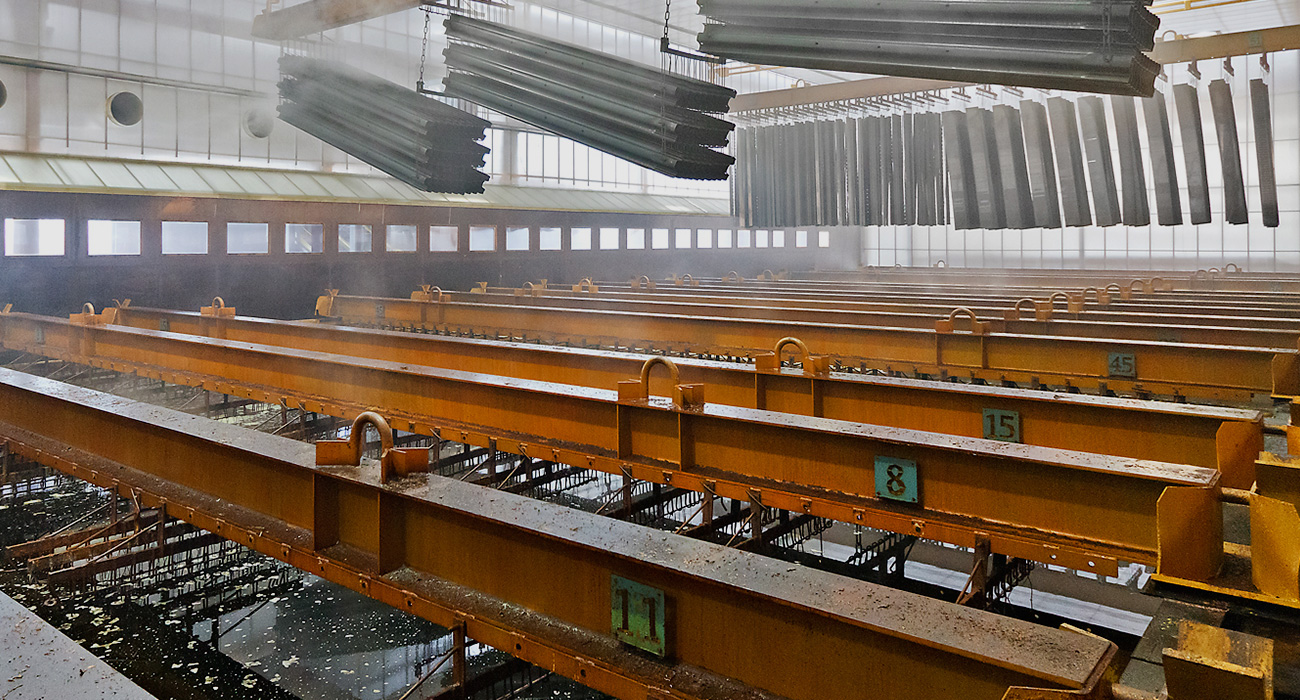In order to ensure that the iron-zinc alloy forms correctly, it is first necessary that the fabricated articles to be galvanized be completely free of any of the rust or oil that is normally present on their surfaces. These are removed by immersing the materials in a series of degreasing and pickling baths, which cleans them completely.
Articles thus prepared are washed in water and then immersed in a flux solution; the flux layer deposited on their surfaces creates a temporary barrier to protect the materials during the stages of drying and preheating in the drier unit.
The next stage of galvanizing involves the immersion of the fabricated articles in a bath containing molten zinc at a temperature of approximately 445°C. During this stage, the zinc bonds with the iron so that, even when it is being removed from the bath, it is already solidifying onto the material, which is subsequently either left to cool in the air or immersed in water and, in some cases, passivated.
The process in and of itself is very simple, but to be certain of obtaining a qualitatively and aesthetically sound product, the plant where it is performed must have the appropriate technical characteristics and be of a sufficient size. It must use high-quality raw materials and be capable of operating using the best technologies available today (then... well, there are a few more little secrets, but that's another story!).

